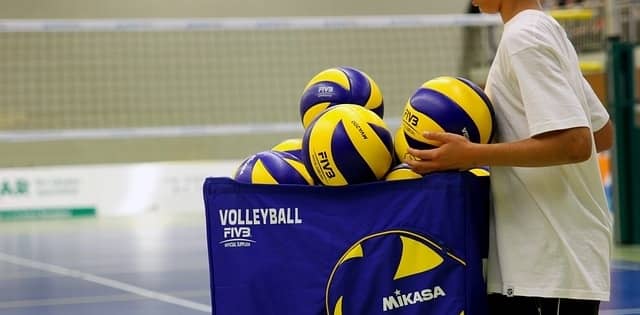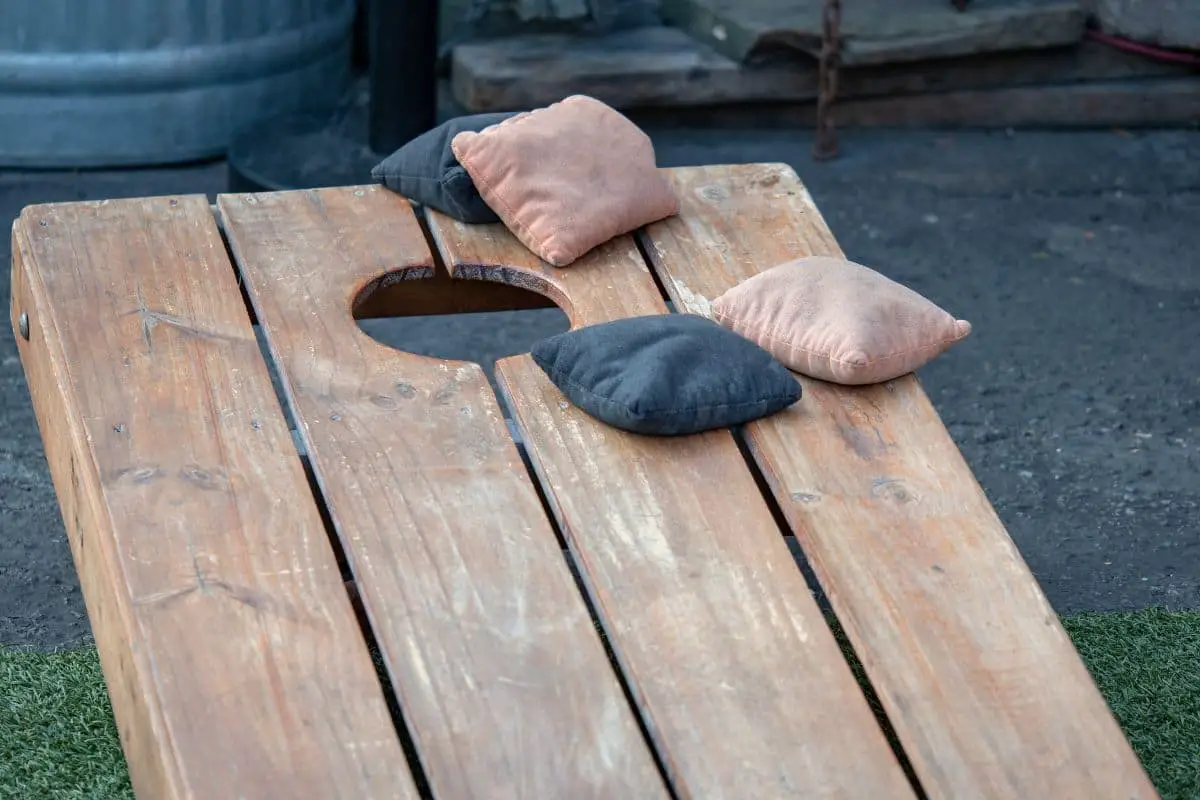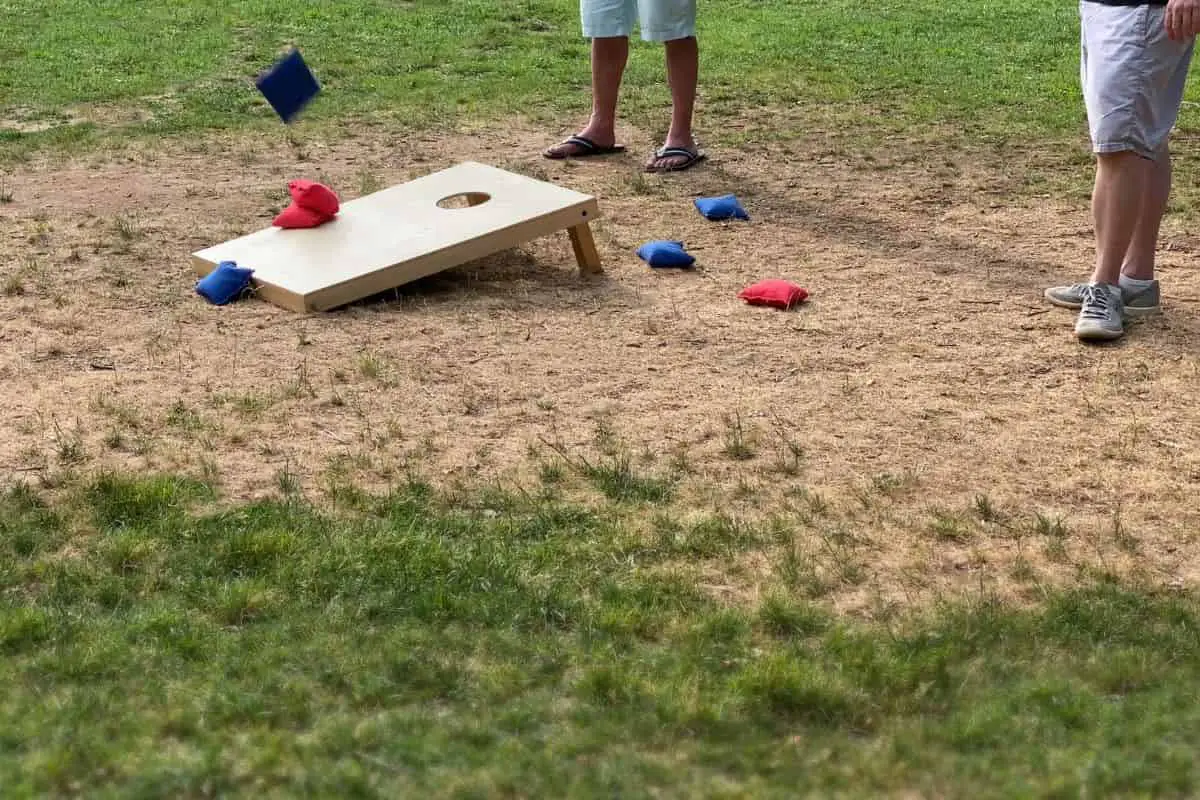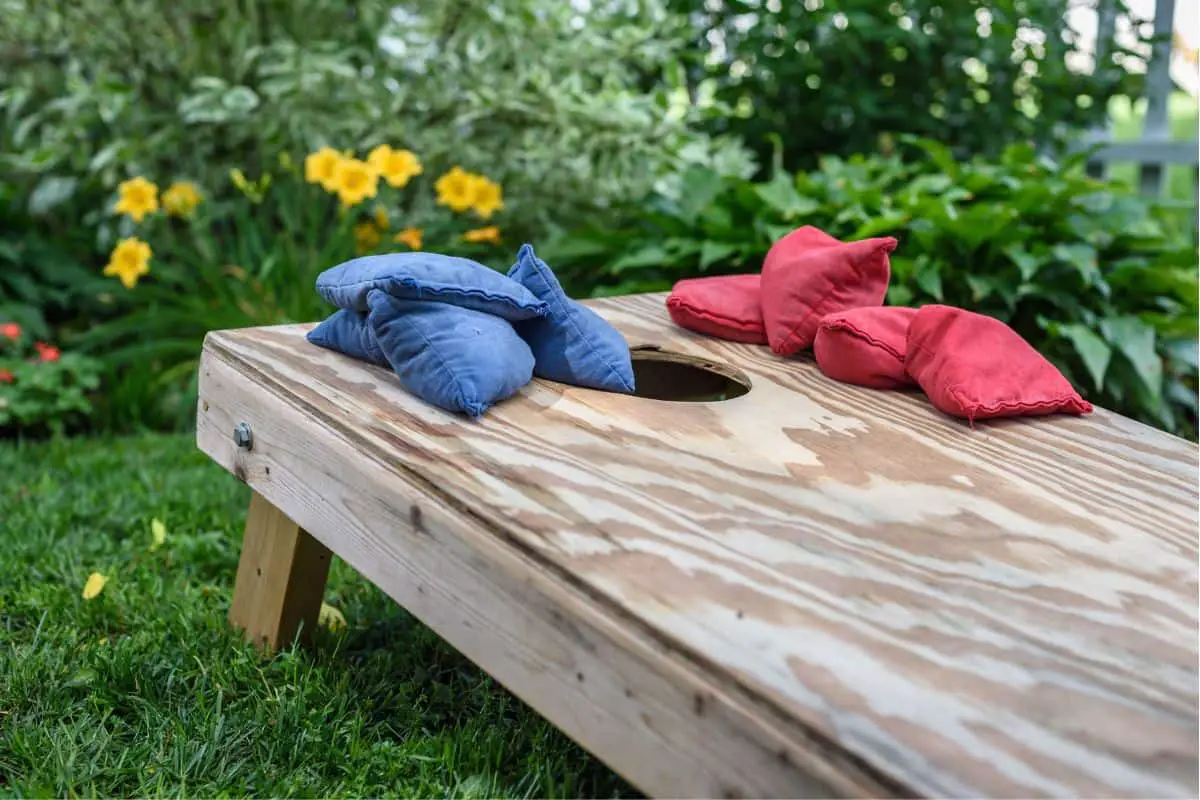Each sport has an aspect that terrifies new athletes. Swimming has flip turns and starts, running has hurdles, track and field has the high jump, and baseball has a fastpitch. It is no shock that volleyball would have its own terror: spikes.
There’s no getting around it. If you’re going to play volleyball, you need to NOT be afraid of receiving a spike. Yes, this is much easier said than done. However, spiking (hitting) and bumping (passing) the ball are basic skills of volleyball. So, the sooner you get comfortable receiving a spike, the sooner you’re improving your basic volleyball skills.
Click here for 7 Basic Volleyball Skills for Beginners
Fortunately, there are things that you can do to feel more comfortable. The best thing a beginner can do to not be afraid of receiving a spike is PRACTICE! The more you play and feel comfortable with the ball, the more natural it will be to receive a spike. Below are 11 more specific tips on how to not be afraid of receiving a spike.

Tip 1: Stay low and on your toes
You want to position yourself to be prepared to travel where the ball goes. If you are standing straight up, flat-footed, or on your heels, you cannot move quickly. Get on your toes and stay low, leaning forward and bending at the waist. This stance helps your reaction time. Be prepared to move forward or backward.
Tip 2: Learn the best defensive position
Most people think that the right way to dig a spiked ball is by waiting for it in a bumping position. That would be true, if you knew for sure that the hitter was going to hit it RIGHT AT YOU. However, since the purpose of spiking is to score a point, the hitter should be aiming for where the players AREN’T standing. That means that as the person digging the ball, you need to be prepared to move to where the ball is going to land.
The defensive position to stand in when waiting for the spike is leaning forward at the waist, knees bent, poised to move quickly. And DON’T keep your hands clasped together in a bumping position; instead, keep them out in front of you, slightly bent, and slightly higher than where they would be for a bump. This is important for two reasons:
- You’ll be faster when you’re trying to move towards the ball. Seriously, try it out by seeing how fast you can run by clasping your hands together, versus how fast you can run with your hands not clasped.
- Your arms will be ready to move into a bump OR upwards to cover your face, in case the spike is coming towards your face. Trust me, this happens, and trust me, you want to protect your face! I know this from firsthand experience of getting a spike in the face! That’s actually the best reminder to ALWAYS keep my arms out in front of me, ready to go down into a bump, or up to protect my face.

Tip 3: Watch the hitter
Watch where the hitter is hitting. This tip sounds obvious, but new players often overlook it. You can somewhat anticipate where the hitter intends to go before she gets to the ball. Keep an eye on her shoulder – that’s often a good indicator of which way she’s going to swing to hit the ball. Move closer or lean in the direction the hitter is aiming before the ball comes your way. You will likely be better set up to hit the ball. This action is called “reading the ball.”
You can also watch their spiker during warmups. Sometimes they will favor one side over the other. They may have a telltale sign to fake out the digger. They may also line up their shoulders in the direction they expect the ball to go. You are giving yourself a sneak peek to how they hit.
Tip 4: Stop thinking about the ball
Reflect on something that once caused you stress. Perhaps a test or asking someone out on a date for the first time. You likely obsessed over it. Despite if the teacher gave you a test half the class flunked or one you aced, or if the person rejected you or you ended up going for ice cream together, the obsession was likely far more mind-bending than the actual worry.
The same concept applies now. When you are focusing entirely on the spike, you will continue to psych yourself out. Think less about the ball coming to you and more about trying to read where it will go. Even better, visualize yourself successfully digging up the ball. This change of focus takes some of the nerves away naturally. Perhaps it will help to remember that the ball is just inflated leather.

Tip 5: Work with a partner: Pepper!
Team up with a partner. Set the ball for the partner and have your partner spike the ball to you. Try to pop it up. Then reverse the operation. This back and forth volleyball drill between two players is called peppering.
Click here for Volleyball lingo that sounds like food but is for real
Because the ball is coming with steam, you will not need to use a hard bump. You want to absorb some of the power to not send the ball sailing. By repeating this drill, you will begin to become desensitized to the ball coming toward you from a spike. The more this becomes the norm, the less you will fear it.
Tip 6: Normalize it
Stand on one side of the net. Have a partner spike the ball to you. Start with a lighter hit, and as your comfort level increases, have your partner turn on the power. Build up until you are comfortable with a harder and faster hit. This exercise increases your tolerance and provides you with experience with different levels of digging.
Back in early high school, I had a coach that would do a similar drill with all the newbie players. He would stand about 10 feet away from each of us, then spike the ball directly at our outstretched arms ready in a bump position. At first, it was TERRIFYING! However, it really did the trick – if you’re in the right position, bumping a spiked ball does not hurt!
If you are not ready for the ball yet, have a friend throw a pillow or stuffed animal. If you are afraid, you will likely move away from the doll before it gets to you. Work with that until you can take away some of that fear. Then imagine the stuffed animal as a volleyball. When you are ready, replace it with an actual volleyball.
Tip 7: Work on your reaction time
Likely your fear is getting hit in the face with the ball. You can avoid this by working on your reaction time. By bringing your arms up sooner, your arms contact the ball before your face does. Work on drills forcing you to move side to side, as well as forward and backward, quickly.
Try not to let your fear create a slower reaction time. You will get hit at some point will the ball, and it will sting, but the pain will dissipate in a few minutes. Ironically, if you hold back, you will likely get hit more.
Tip 8: Picture the worst and best outcomes
A lot of fear is based solely on the worry of what could happen. Picture your fear. What does that look like to you? Is it getting hit with the volleyball or losing the game because of not returning the spike? If you can find a way to be okay with that outcome, then the fear of it happening will begin to fade.
Once you have imagined all that could go wrong, imagine what could go right. How sweet will that success feel? Envision returning the spike perfectly. Imagine the sting but glory as you know you prevented it from being the winning point. Be inspired to try.

Tip 9: Lose the idea of failure
In reality, there is no failure. There are just steps toward or away from a goal. When you permit your fear to control your actions, you won’t fail, per se, but you will never do anything significant. When you start looking, instead, at what is possible, the idea of messing up just becomes a step to reaching your goal.
While he didn’t play volleyball, keep in mind the classic story of Michael Jordan, American basketball legend. When he tried out in high school, he made the Junior Varsity team. Usually, this would be expected, but when he saw his good friend make Varsity, it crushed him. What he did next made the difference.
Rather than being lost in the focus of failure, he practiced harder, took risks, and conditioned himself to end up making history. He could have let the fear of failure, and what some may have labeled as a failure, stop him. Instead, he used it as a stepping stone to success.
Tip 10: Know how to fall
When you dig to return a low spike, chances are you will hit the ground. Proper knee protection needs emphasizing here. Knowing falling is a part of the game, you do not want it to be what takes you out of the game. Learning how to fall from a low distance helps prevent unnecessary injuries.
To “dive and dig,” the spike will be coming from in front of you. Get low, bend your knees, and drive forward. Slide onto your chest as you hit the ball. Keep your head back and up to avoid contact with the floor.
The “sprawl and dig” is where you make contact with the ball from a side. Step to the direction in which the ball is going. Dip your inside shoulder so you can maintain the positioning of your arms.
Tip 11: Practice placement and touch
Practice the amount of power you need to return a ball. Focus on how to angle your arms to change the ball’s direction, aiming toward your target. Do this enough times, so when the ball is spiking toward you, you have a good idea of how to return the ball. Your focus can be 100% on digging and 0% of being scared of the spike.
Learning a new skill, especially one where a ball is traveling toward you, is intimidating, Luckily intimidating doesn’t mean impossible. With practice and mindfulness, you can transform your fear into a spike-returning powerhouse. Allow yourself the grace to mess up and retrain your brain that failure is just a stop on the way to success. You’ve got this!





Leave a Reply
You must be logged in to post a comment.